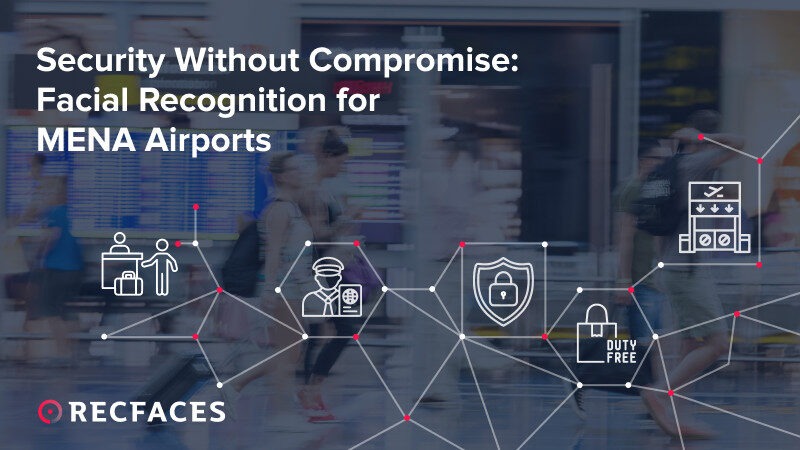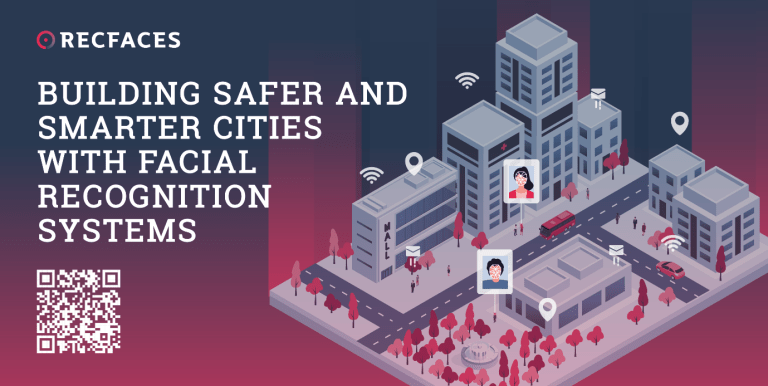Security Without Compromise: Facial Recognition for MENA Airports

The Middle East and North Africa region has become a key player in the global air transport landscape, marked by strong post-pandemic recovery, a surge in passenger volumes, and growing investments in smarter, more secure airport infrastructure.
While air travel is growing across the whole MENA region, certain countries remain particularly sensitive to security risks due to their geopolitical importance. This makes advanced technologies, like facial recognition, crucial for addressing heightened security challenges in airports. These innovations not only provide enhanced protection but also boost operational performance in the region’s busiest hubs.
At the beginning of 2024, African airlines navigated a complex landscape marked by economic pressures, regulatory challenges, and intensified competition. Nonetheless, the sector witnessed a steady recovery. According to the International Air Transport Association (IATA), Revenue Passenger Kilometers (RPKs) rose by 16.8% compared to the same period in 2023, while Available Seat Kilometers (ASKs) saw an 18.9% increase. The upward trend continued in the second half of the year, with RPKs rising by 7.4% and ASKs by 8% year-over-year.
Nowhere is this momentum more visible than in North Africa, which accounted for 40.4% of the continent’s total passenger traffic at the beginning of the year and climbed by 44.1% in its second part. But growth brings its own set of challenges. With mounting pressure on infrastructure, rising operational costs, and an urgent need for enhanced security, airports across North Africa — from Cairo and Algiers to Casablanca and Beirut — are seeking innovative ways to scale safely and efficiently. Increasingly, they are finding answers in facial biometric technologies.
Reinventing Airport Security in a High-Pressure Region
Operating in one of the most geopolitically sensitive regions in the world, North African airports face elevated risks of security breaches, making advanced identity verification technologies — particularly facial biometrics — essential for ensuring both safety and efficiency. Passenger journeys often span complex international routes, with intercontinental travel accounting for 92% of the region’s air traffic. This underscores the need for robust, high-throughput border control systems that can process growing volumes without compromising security.
Morocco continues to be the region’s primary contributor to Europe-bound traffic, with France, the UK, Germany, and Italy as key destinations. Egypt leads the Middle East corridor, with strong demand to Saudi Arabia and the UAE.
To secure this volume of international travel, traditional manual ID verification methods fall short. Facial recognition technologies offer an intelligent, beneficial solution:
- High-speed processing of passengers through key checkpoints (check-in, security, boarding)
- Instant identity authentication without the need for physical documents
- Reduced risk of identity fraud through accurate, AI-powered verification
- Enhanced focus for security personnel, allowing them to concentrate on high-risk cases instead of routine checks
- Increased efficiency and throughput across airport operations
Reducing Operational Costs Through Automation
While the security benefits are clear, the operational advantages of facial biometrics are equally compelling. Traditional identity checks are labor-intensive and prone to human factor, requiring significant staffing at each checkpoint. In contrast, biometric systems streamline these processes with automation — reducing human error, accelerating passenger flow, and enabling a seamless experience.
In North African airports, where intercontinental travel dominates, biometric-enabled gates and kiosks can dramatically cut down on processing time per passenger. This translates directly into cost savings, with fewer delays, better use of airport space, and optimized staff allocation.
For example, when facial recognition is integrated with other airport systems — such as HVAC, lighting, surveillance and access control — it contributes to both operational resilience and sustainability. Smart terminals in the region are already exploring these synergies to reduce energy consumption and operational complexity.
Strategic Investment for Long-Term Security
North African airports — Casablanca Mohammed V, Cairo International, Houari Boumediene (Algiers), and Tunis–Carthage — remain among Africa’s busiest. As the region reclaims its role as an intercontinental bridge, digital transformation is not just an upgrade — it’s a necessity.
Investing in facial biometrics not only enhances security and makes passengers feel safe — it reduces cost per passenger, strengthens fraud prevention, and positions airports for future global partnerships and airline expansion. However, the success of these biometric systems hinges on robust technological collaboration. Seamless integration with existing infrastructure, interoperability with security and building management systems, and ongoing innovation all depend on strong partnerships between airport authorities, technology vendors, and systems integrators.
By aligning operational goals with the capabilities of specialized tech providers, North African airports can ensure that biometric deployments are not only functional but also secure, scalable, and resilient. These collaborations are vital to reinforcing protective measures, addressing evolving threats, and building trust in an increasingly complex global environment.
The Future Is Secure, Contactless, and Smart,
With air travel on a strong upward trajectory and infrastructure under increasing pressure, now is the time for North African airport leaders to reimagine operations through the lens of biometric automation.
Facial recognition represents both a clear, easy-to-use solution and a foundational technology for secure, scalable, and intelligent airport ecosystems. By adopting these solutions today, North African airports can lead Africa’s aviation — setting new benchmarks in security, operational- and cost-efficiency, and contributing to safe air travel.
To gain deeper insight into this complex issue, RecFaces is hosting a free expert panel discussion “Passenger-First Innovation: Biometrics Behind MENA’s Seamless and Safe Air Travel” specifically designed for airport and airline authorities, security professionals, systems integrators, and border control agencies across the MENA region.
The panel will explore how facial biometrics can strengthen airport security today — not just at passenger checkpoints, but across the entire airport environment. From staff access control and surveillance to seamless boarding and faster immigration clearance, real-world applications are already taking shape across MENA. For instance, some airports are combining facial recognition with secure staff zone access systems and integrated video analytics to detect unauthorized movement in sensitive areas — helping prevent internal security breaches before they escalate.
Be part of the next era of secure air travel. Reserve your spot today for the expert panel, “Passenger-First Innovation: Biometrics Behind MENA’s Seamless and Safe Air Travel”, happening on May 21, 2025, at 15:00 GST.
Register now for free to join the conversation! https://us02web.zoom.us/webinar/register/7617471468946/WN_5RIA4fLUS4-DDLfyYzJJyA







